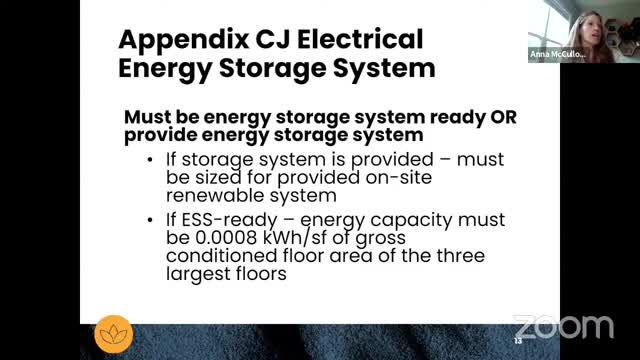Building Code Update mandates energy storage capacity for new developments
April 27, 2025 | Energy Office, State Agencies, Organizations, Executive, Colorado
This article was created by AI summarizing key points discussed. AI makes mistakes, so for full details and context, please refer to the video of the full meeting. Please report any errors so we can fix them. Report an error »

In a pivotal meeting held by the Colorado Energy Office, discussions centered around the future of energy efficiency and sustainability in building codes. As the sun streamed through the windows of the conference room, board members delved into the intricacies of the Low Energy and Carbon Code, focusing on the integration of energy storage systems in new constructions.
One of the key points raised was the requirement for buildings to be either "electric storage system ready" or to include an on-site energy storage system. This dual approach aims to enhance the resilience of buildings while promoting the use of renewable energy sources. If developers opt to install an energy storage system, it must be appropriately sized to match the capacity of the on-site renewable energy generation. For those choosing the "ESS ready" route, the code stipulates a minimum energy capacity of 0.0008 kilowatt hours per square foot of the three largest floors of the building. This ensures that future energy needs are considered during the design phase, laying the groundwork for sustainable practices.
As the meeting progressed, board members also discussed the importance of additional resources and appendices that were introduced through the appeals process. These resources are intended to provide clarity and guidance for builders and developers navigating the new regulations.
The implications of these discussions are significant, as they mark a step forward in Colorado's commitment to reducing carbon emissions and promoting energy efficiency. By mandating energy storage readiness, the state is not only preparing for a greener future but also encouraging innovation in building design and energy management. As the meeting concluded, it was clear that the decisions made today would shape the landscape of Colorado's energy use for years to come.
One of the key points raised was the requirement for buildings to be either "electric storage system ready" or to include an on-site energy storage system. This dual approach aims to enhance the resilience of buildings while promoting the use of renewable energy sources. If developers opt to install an energy storage system, it must be appropriately sized to match the capacity of the on-site renewable energy generation. For those choosing the "ESS ready" route, the code stipulates a minimum energy capacity of 0.0008 kilowatt hours per square foot of the three largest floors of the building. This ensures that future energy needs are considered during the design phase, laying the groundwork for sustainable practices.
As the meeting progressed, board members also discussed the importance of additional resources and appendices that were introduced through the appeals process. These resources are intended to provide clarity and guidance for builders and developers navigating the new regulations.
The implications of these discussions are significant, as they mark a step forward in Colorado's commitment to reducing carbon emissions and promoting energy efficiency. By mandating energy storage readiness, the state is not only preparing for a greener future but also encouraging innovation in building design and energy management. As the meeting concluded, it was clear that the decisions made today would shape the landscape of Colorado's energy use for years to come.
View full meeting
This article is based on a recent meeting—watch the full video and explore the complete transcript for deeper insights into the discussion.
View full meeting
